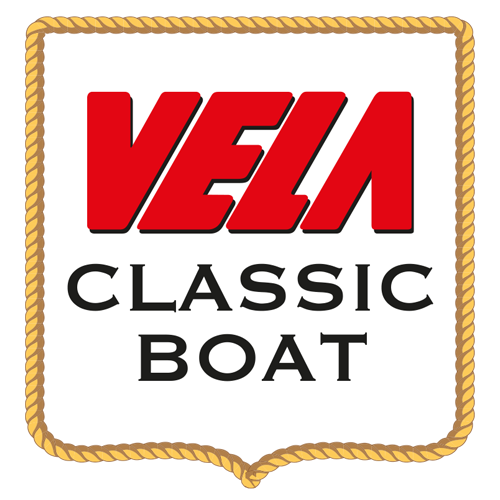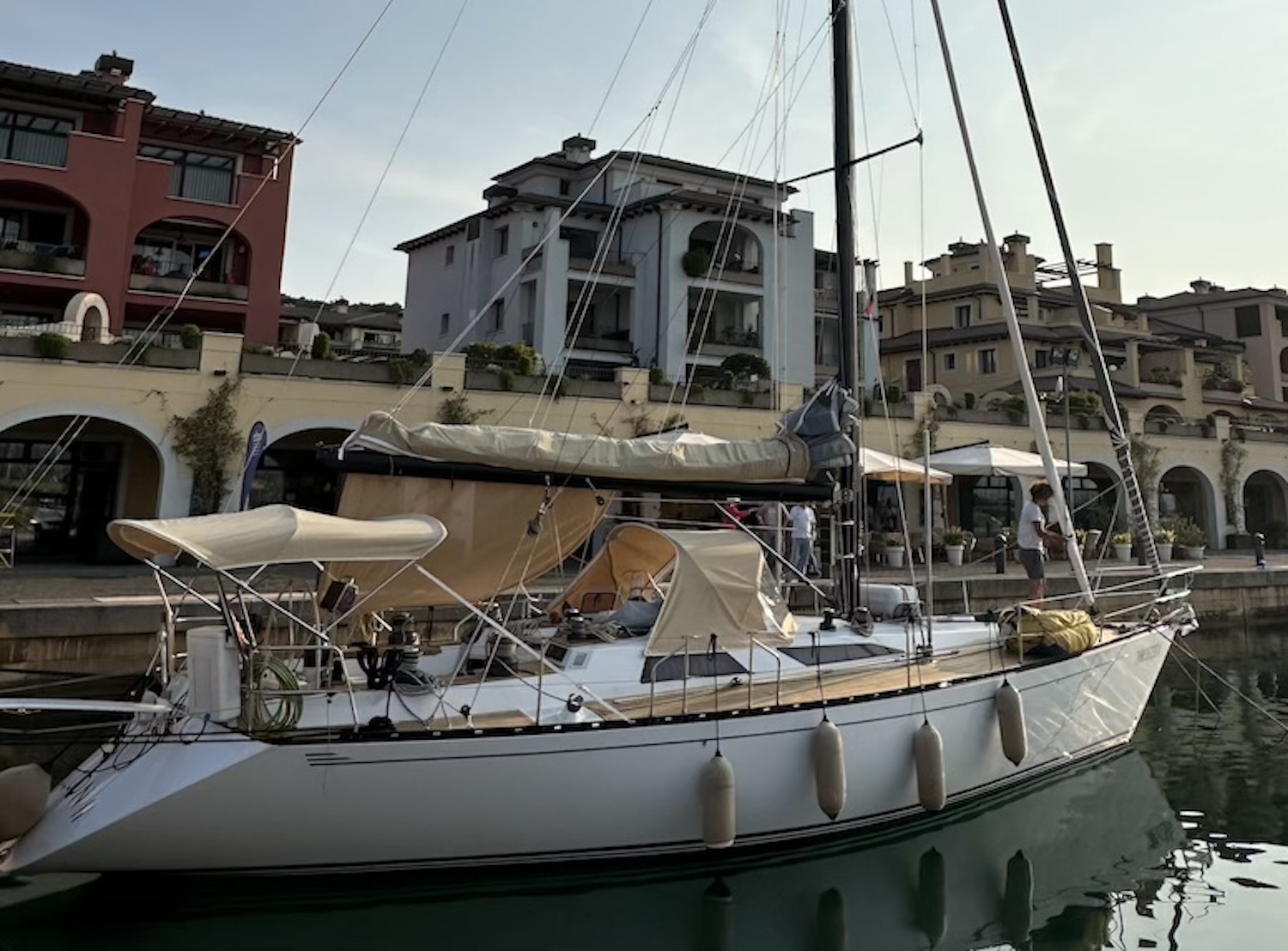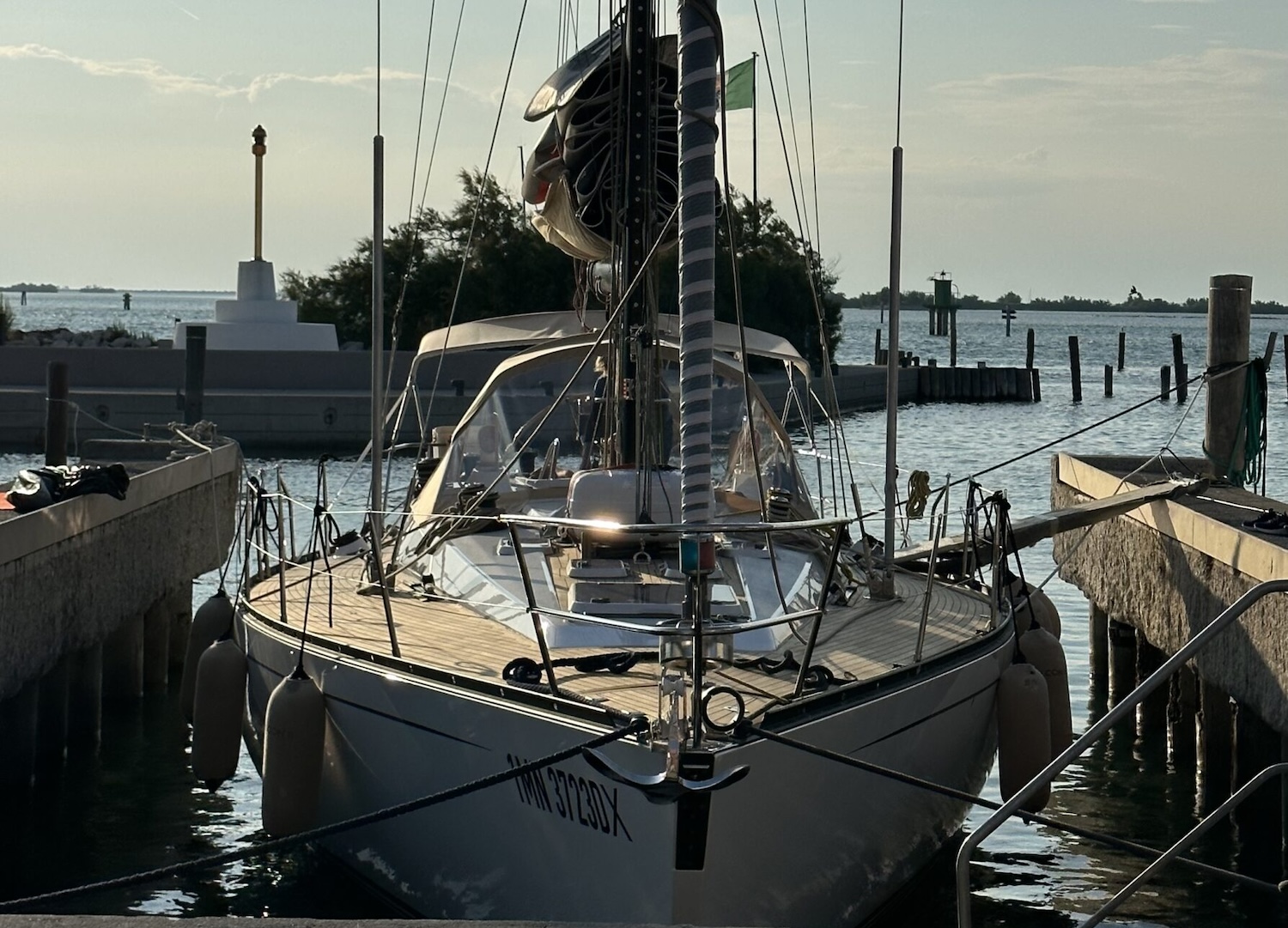The Baltic 43 was an exceptional hull in terms of design and performance. A high-level Cruiser-Racer, it was designed by Judel Vrolijk, keeping in mind the endless lessons learned in designing their hulls for the Admiral’s Cup, adapting these to the needs of a fast cruising boat. The keel, an infusion of lead and antimony, has a new rounded design, derived from prolonged tank tests: having a lower center of gravity increases stability without adding weight to the ballast and, thanks to the length of the upper profile and shorter front, the laminar flow is improved, reducing resistance. The rudder is semi-elliptical, sword-shaped, compensated and balanced, and filled with PVC foam. The steering is wheel-operated, characterized by a low reduction ratio, allowed by the balancing of the rudder, to offer the helmsman sensitivity in light wind comparable to that of a tiller without losing the undisputed advantages of the wheel in all points of sail with medium and strong winds.
The hull has also received special attention: in addition to the common reinforced floor timbers to distribute stresses, a large stainless steel plate has been added, connected to the bottom structure, where part of the stresses transmitted by the nearby engine mounts are also concentrated. The latter is placed in the most advantageous position for propulsion, without neglecting the need to concentrate weight towards the hull’s center of gravity to obtain high sailing performance. It has a masthead rig with a high-aspect headsail and a low-aspect mainsail. This was the best configuration for a fast racing and cruising yacht of its size, making the foretriangle more manageable and allowing the boat to be maneuvered with the mainsail alone. The deck is made of balsa sandwich, but it’s a special balsa, type CK 57, used for aeronautical constructions. The use of Kevlar with unidirectional fabrics produced to shipyard specifications with technology that avoids damage to individual threads unlike common mixed fabrics woven on looms developed for glass weaving, the choice of entirely balsa sandwich construction with the selection of an aeronautical quality of the very light CK 57 type wood only 95-96 kg per cubic meter, and the adoption of air quality control standards for resin processing that were extremely advanced for the time. The choice to use glass mixed with Kevlar has increased, in addition to lightness and rigidity, impact resistance (Kevlar was widely used in bulletproof armor).
The deck equipment and winches are very complete, with 11 winches, 2 of which are electric. In addition to the normal equipment, it offers as standard the Navtec three-way hydraulics for the backstay, vang, outhaul, and mainsail luff, thus allowing perfect control of the curvature of the three-spreader mast. The latter does not require the use of running backstays below 35 knots of wind, to the benefit of ease of maneuvering while cruising. Equally advanced is the choice of profile in the casting of a deep bilge water collection well, which, despite the flattened sections of the hull dictated by the very modern lines of the hull, guarantees the possibility of “sailing dry” in any weather.



